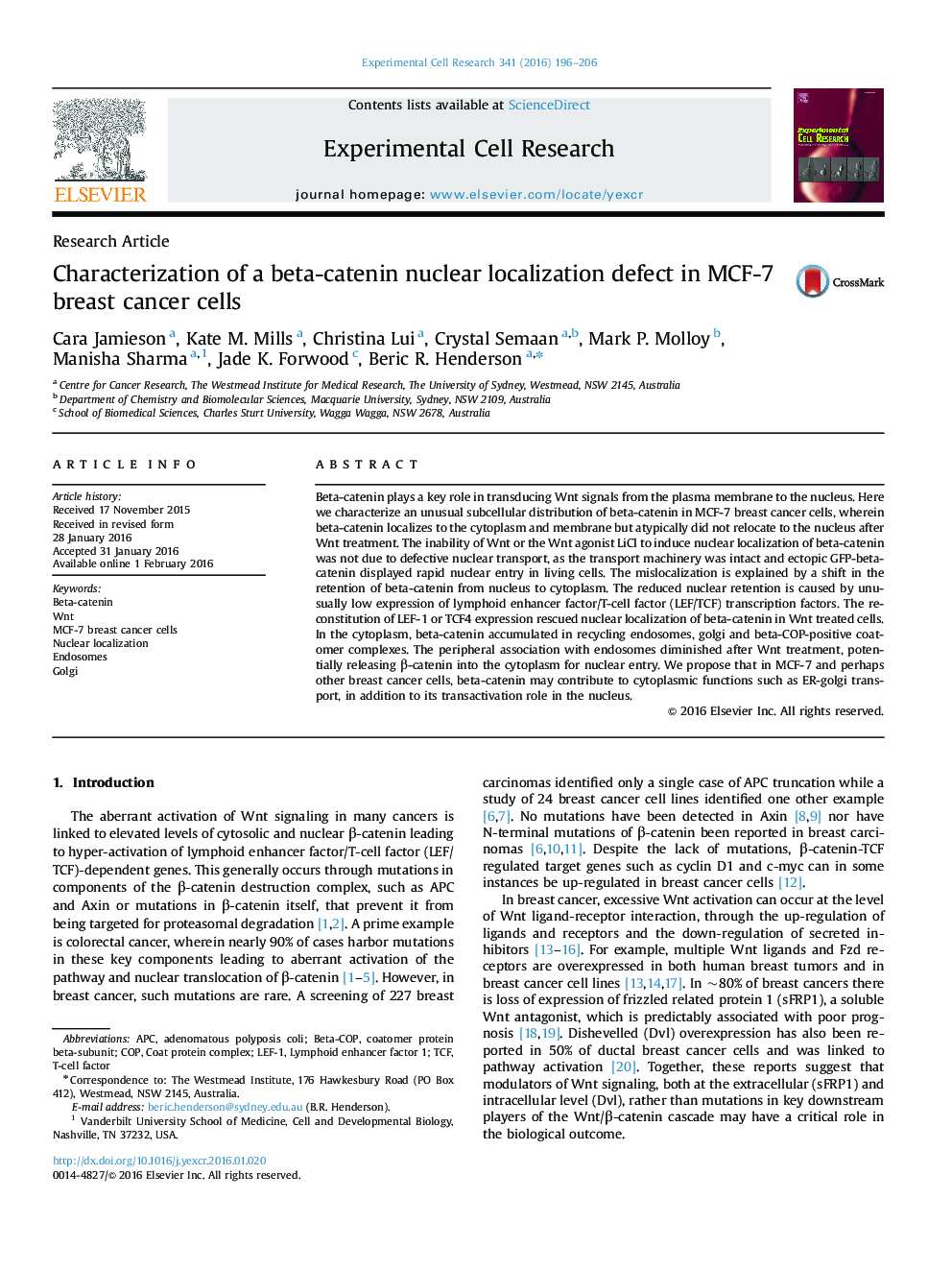| Article ID | Journal | Published Year | Pages | File Type |
|---|---|---|---|---|
| 2130001 | Experimental Cell Research | 2016 | 11 Pages |
•MCF-7 breast cancer cells are defective for beta-catenin nuclear accumulation.•Beta-catenin nuclear retention is lost in MCF-7 cells due to poor LEF1/TCF expression.•Beta-catenin accumulates in the cytoplasm at endosomes and golgi in MCF-7 cells.•Wnt signaling can stimulate release of beta-catenin from endosomes.
Beta-catenin plays a key role in transducing Wnt signals from the plasma membrane to the nucleus. Here we characterize an unusual subcellular distribution of beta-catenin in MCF-7 breast cancer cells, wherein beta-catenin localizes to the cytoplasm and membrane but atypically did not relocate to the nucleus after Wnt treatment. The inability of Wnt or the Wnt agonist LiCl to induce nuclear localization of beta-catenin was not due to defective nuclear transport, as the transport machinery was intact and ectopic GFP-beta-catenin displayed rapid nuclear entry in living cells. The mislocalization is explained by a shift in the retention of beta-catenin from nucleus to cytoplasm. The reduced nuclear retention is caused by unusually low expression of lymphoid enhancer factor/T-cell factor (LEF/TCF) transcription factors. The reconstitution of LEF-1 or TCF4 expression rescued nuclear localization of beta-catenin in Wnt treated cells. In the cytoplasm, beta-catenin accumulated in recycling endosomes, golgi and beta-COP-positive coatomer complexes. The peripheral association with endosomes diminished after Wnt treatment, potentially releasing β-catenin into the cytoplasm for nuclear entry. We propose that in MCF-7 and perhaps other breast cancer cells, beta-catenin may contribute to cytoplasmic functions such as ER-golgi transport, in addition to its transactivation role in the nucleus.
